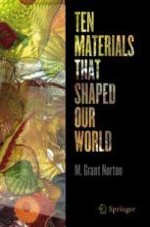2021 | OriginalPaper | Chapter
9. Polyethylene—The Material of Chance
Author : M. Grant Norton
Published in: Ten Materials That Shaped Our World
Publisher: Springer International Publishing
Activate our intelligent search to find suitable subject content or patents.
Select sections of text to find matching patents with Artificial Intelligence. powered by
Select sections of text to find additional relevant content using AI-assisted search. powered by
